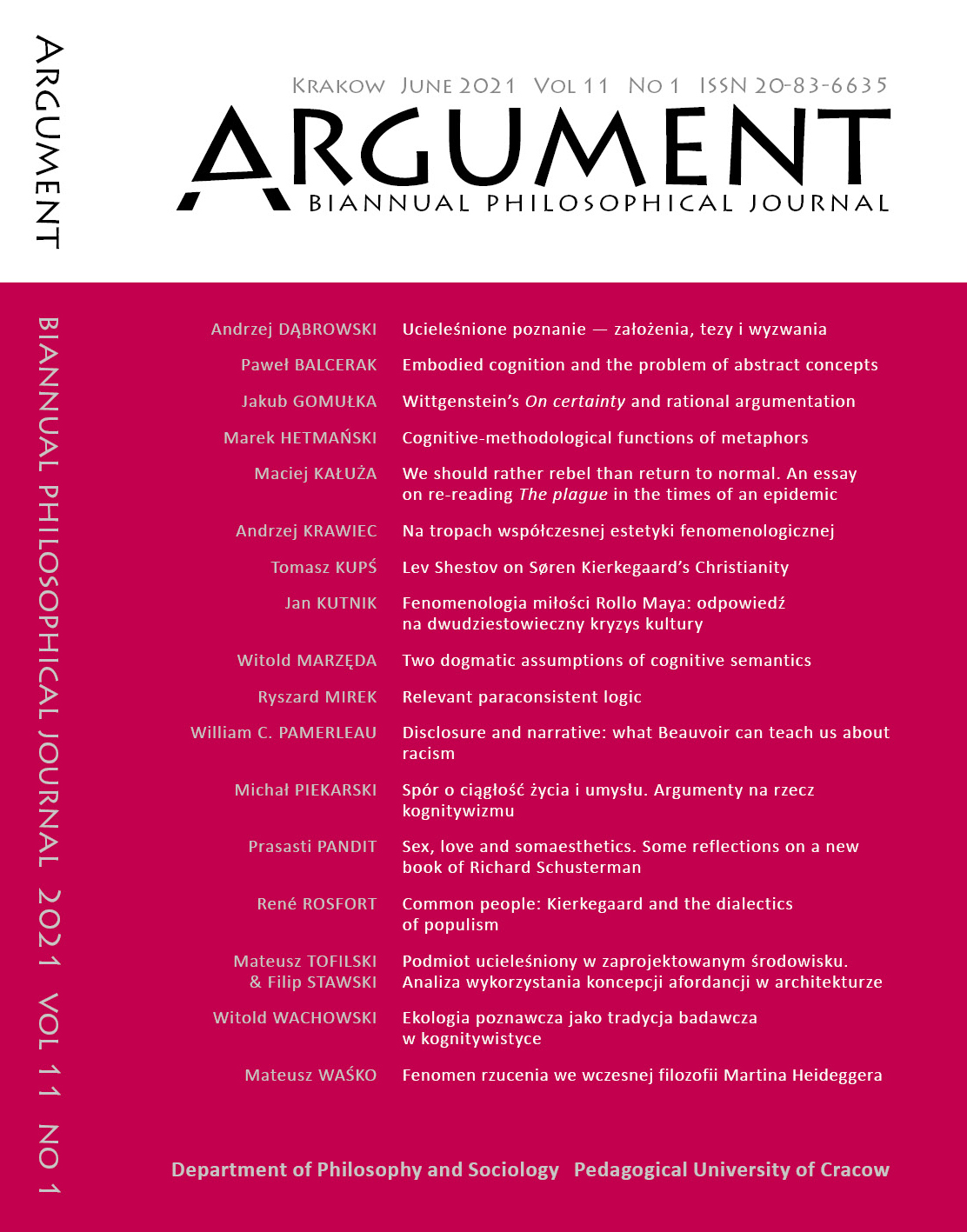Fenomen rzucenia we wczesnej filozofii Martina Heideggera
Keywords:
thrownness; openness; world; Martin Heidegger; freedom; responsibilityAbstract
The phenomenon of thrownness in the Martin Heidegger early philosophy: The aim of this article is to analyse one of the best-known Heideggerian phenomena, thrownness (Geworfenheit). The meaning of this phenomenon is presupposed mostly as obvious. However, it can be found in different existential contexts which seems to make essential the posing of an explicit question on thrownness. In this paper I analyse it in three different contexts. (1) Thrownness into the openness of being shows the fundamental Dasein dependence on the being (Sein). As thrown into openness Dasein is not able to refuse being, she has to be. However, this dependence cannot be considered as inactive. Dasein has to constantly appropriate openness by the way of projecting the world. As thrown in openness which has to be appropriated Dasein discloses herself as (2) thrown into the world. The world is not understood as the set of relations connecting entities, but instead as the understandness of being which Dasein inevitably has to undertake. This facet determines the understanding of entities what leads to the (3) thrownness into entity. This last character of thrownness shows itself as the powerlessness (Ohnmacht) of Dasein in the face of entity. This powerlessness is at the same time embodied and by this way given to its own body. Eventually, thrownness displays Dasein as in her freedom uncompromisingly responsible for being and entity. For that reason thrownness turns out to be this character of Dasein which describes her as basically handed over to the openness of being, to the world, and to entity. However, it does not release Dasein from her responsibility, but instead burdens her with it.


